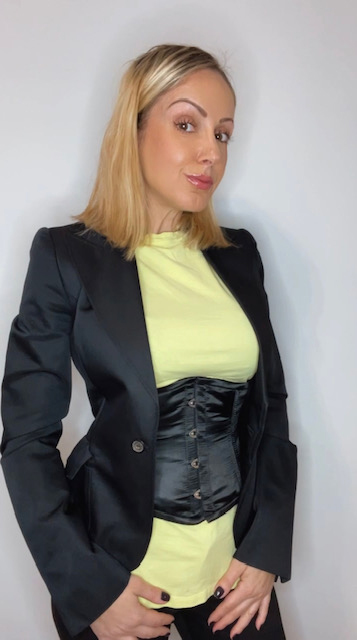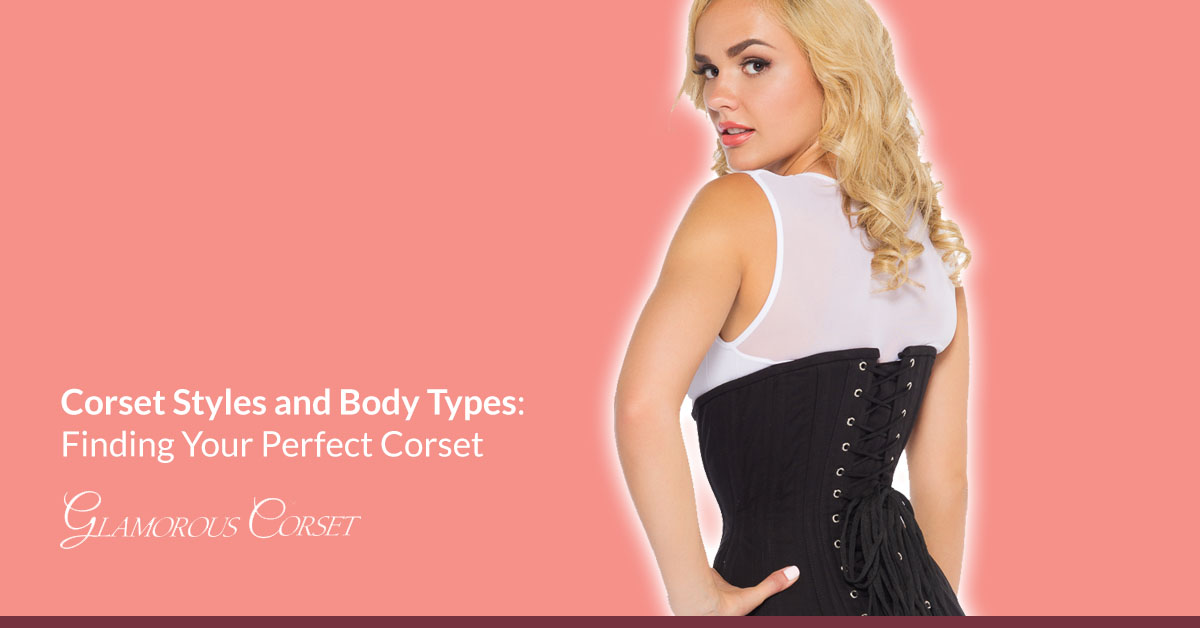Blog
Corset Styles and Body Types: Finding Your Perfect Corset
Every woman knows the difficulty and despair of searching for garments that fit like a glove. Off-the-rack is often designed with a single body type in mind (the willowy model), and women with curvy, athletic, or other figures are left trying to shimmy and squeeze into pants and tops that aren’t ideal for their particular proportions.
When it comes to undergarments that are meant to fit snugly and close to the body, these issues can become even more pronounced. The good news, when it comes to corsetry, is that these supportive garments are not a one-size-fits-all proposition. There are plenty of options to consider, so you can always find the right size, shape, spring, style, and more to suit your body and your personal preferences.
When it comes to corset styles and body types, finding the perfect garment can seem a daunting task, but when you consider how many hours you’ve spent in fitting rooms, not-so-silently cursing the ill-fitting jeans you’re trying to jump into, you’ll discover that corset selection, with so many options for personalization, is a breath of fresh air. Here are a few tips for finding the ideal corset for your body type.
Know Your Body Type
Let’s just start by dispensing with the fruit bowl of female body types and instead use geometric shapes to delineate common forms and figures. Many women don’t know what their body type is, and this can naturally impede the search for suitable corsets, so here’s a quick primer to get you started.
- Rectangle. Not every woman is super curvy, and that’s ok. A rectangular shape involves a fairly straight line from bust to hip, with close measurements between the bust, hip, and waist.
- Athletic. This is similar to rectangle, but with a fairly straight line from shoulder to hip, or perhaps slightly narrower at the hip.
- Triangle. This body shape is narrow up top, in the shoulder area, and wider in the hips, typically with a defined waist.
- Inverted triangle. The opposite of a triangle, this shape is characterized by wide shoulders or bust area and narrow hips.
- Round. A fuller bust and waistline and narrow hips result in this shape.
- Diamond. Diamonds may be a girl’s best friend, but if you want an hourglass figure, a diamond shape can be challenging to work with. The opposite of hourglass, this shape is defined by wider hips and waistline and narrower shoulders and bust.
- Spoon. This hip figure features a narrow line from shoulder, to bust, to waist, with more girth in the hip region.
- Top/bottom hourglass. Even if you have curves for days, chances are you’re a little heavier on the top or the bottom, rather than perfectly proportioned.
As you can see, women’s bodies come in many shapes and sizes, so it only makes sense that corsetry offers an equal range of options.
Know Your Corsets
Now that you have a handle on your body type, it’s time to get a basic idea of how corset styles and body types come together, and this starts with knowing what styles of corset are available. The most obvious differentiation is overbust versus underbust styles.
Overbust corsets, which cover the torso and the bust, tend to be ideal for bodies that don’t have a lot of bust. Here’s why. Corsets are compression garments. If you have a smaller bust, an overbust corset will lift and enhance what you have, creating the illusion of more cleavage. For bustier babes, things could quickly get out of hand, resulting in spillage.
If you really want an overbust option, but you’re heavier up top, look for garments featuring gussets to account for added volume. Overbust coresets are also great for women with little curvature, especially when they feature defined waist styles (hourglass, cupped rib, or pipestem).
Underbust corsets are better suited to women who already have a lot of curves to work with and are interested in the waist-slimming properties of corsets. While overbust models could result in a lot of spillage up top or significant squeezing at the hip, shorter underbust corsets focus much more on the waistline, and let the rest of the body do its thing.
Don’t forget to check the spring of your garment, which determines how much it flares out from the waist. Curvy women can often get away with a lot of spring, whereas straighter frames wouldn’t get the right fit, and might suffer gaps.
Consider Your Goals when it Comes to Corset Styles and Body Types
Certain styles of corset will naturally fit certain body types better, but before you adhere to guidelines, it pays to consider what you hope to accomplish.
For example, one woman may want to accentuate her hourglass figure with an exaggerated, pipestem corset. Another may want to downplay it with a conical shape that flattens the torso, to an extent.
Whether you’re looking to add or amp curves, you’re hoping for a straighter line under clothing, or waist training is your ultimate goal, knowing your body type and the corset styles that best suit it can help you to find a fit that’s comfortable and features that help you to reach your goals.
To stay up-to-date with weekly blog posts, waist training tips, and the chance to win one of our monthly corset giveaways, follow us on Facebook, Instagram & subscribe to our mailing list today! Want to find the perfect steel boned corset? Shop some of our favorites: underbust corsets, overbust corsets, corset dresses. You can also shop our corsets by material: cotton corsets, denim corsets, leather corsets, mesh corsets, pvc corsets, and satin corsets. Have questions about getting started with waist training or finding the right size corset? Contact us!

My name is Rachel, I am the owner of Glamorous Corset, a small business founded by me in 2010. Back In 2005, I was in a car accident that left me with a herniated disk. Much to my surprise I learned steel boned corsets were beneficial to several medical injuries including mine. I was always intrigued with corsetry, their history and their beautiful aesthetic. I love sharing knowledge about corsets, educating my wonderful readers and breaking the negative stigma related to corsetry. In combination with my years of research and personal experience I hope my articles are useful and can help anyone who has struggled with some of the same things I have. More about me…


